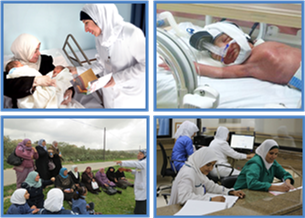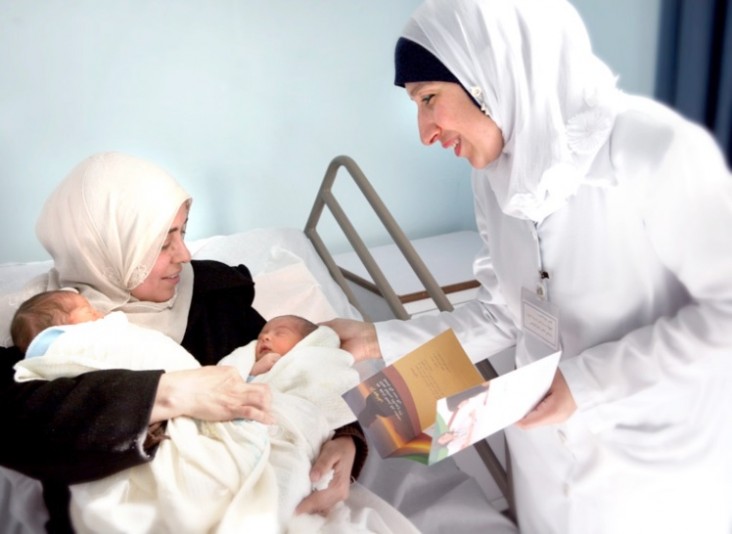Background

The HSS II Bridge is a USAID-funded activity spanning a period of 11 months (October 2014 - September 2015). The purpose of this activity is to maintain previous interventions made to improve family planning (FP), maternal and neonatal health services, information management/data use for decision making, and community health while a new activity is being designed.
HSS II Bridge is focused on improving access to quality FP services across the public sector in Jordan, while also introducing best practices in maternal and neonatal health, in order to further decrease associated mortality and morbidity (the incidence of disease/illness) in public facilities.
HSS II Bridge builds upon the achievements of previous USAID-funded health activities including Primary Health Care Initiatives (1999–2005), HSS (2005–2010) and HSS II (2009-2014).
Project overview
HSS II Bridge continues the strong partnership between USAID and the Ministry of Health (MOH), the Royal Medical Services (RMS) and the Higher Population Council (HPC) in strengthening health systems in order to improve access, efficiency, and effectiveness of health care service delivery in Jordan. The activity aims to:
- Expand access to equitable and sustainable facility-based FP services
- Strengthen the capacity of MOH and RMS hospitals to continue implementing best practices for maternal and newborn care
- Strengthen the capacity of the MOH to use data generated from different health management information systems to improve decision-making and planning
- Assist the MOH to improve access to FP/RH through community-based organizations
Activities
- Assisting the MOH to improve access to and quality of FP services and information in 24 health centers and six hospitals through the Family Planning Service Delivery Improvement Collaborative (FP SDIC) approach. The FP SDIC approach assists teams at select health facilities to identify and address their specific service delivery gaps, using performance data to refine their interventions and improve results.
- Assisting the MOH to address the high use of traditional family planning methods to improve the uptake of modern contraceptive use through clinical training on IUD and injectable contraception; providing counseling and FP methods for post‐partum and post-miscarriage care in 25 public sector hospitals; and improving the availability and distribution of trained providers.

- Continuing to strengthen the delivery of maternal and neonatal care in public hospitals with specific attention to prevention of postpartum hemorrhage, management of neonatal respiratory distress, and the development of a preconception care model.
- Assisting the MOH in strengthening health information through reviewing systems that support the provision of quality family planning and maternal and neonatal services/information. This will include the development of a conceptual model for a maternal mortality surveillance and response system.
- Building the capacity of two new community-based organizations (CBOs) to improve access to FP, while continuing to support the work of community health committees (CHCs) across Jordan in promoting healthy behaviors, including voluntary family planning.
EXPECTED OUTPUTS
Family Planning (FP)
- The adoption of the improvement collaborative approach by select MOH hospitals and primary health care centers to improve FP service delivery and use with special emphasis on urban poor areas.
- The development of FP counseling materials and approaches adapted to encourage the use of modern family planning methods among those currently using traditional methods.
Safe Motherhood
- Documented use of the Active Management of Third Stage of Labor (AMTSL) for the prevention of postpartum hemorrhage at selected MOH and RMS hospitals.
- Documented use of the Continuous Positive Airway Pressure (CPAP) system for managing newborns with respiratory problems at MOH and RMS hospitals.
- The development of documentation pertinent to the introduction of the preconception care model.
Knowledge Management
- The establishment of models for data use at MOH central, health directorate and facility levels.
- The design of a maternal mortality surveillance and response system that is ready for implementation.
- The provision of a list of standard information technology equipment to accredited MOH primary healthcare facilities.
Community Health
- The transformation of two CHCs into CBOs capable of providing FP services.







Comment
Make a general inquiry or suggest an improvement.